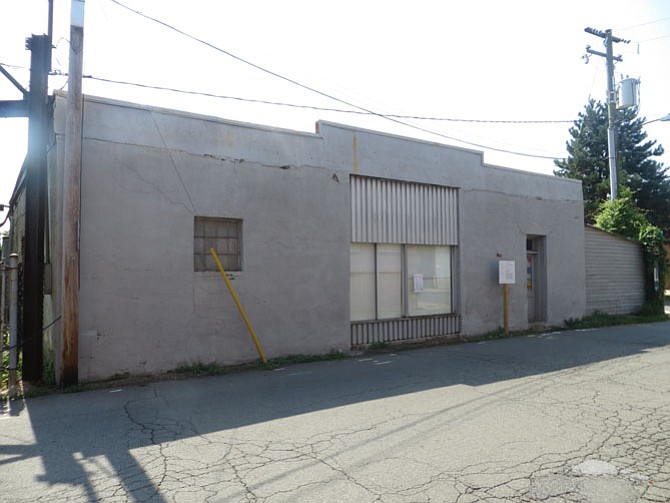The front exterior of 226 The Strand. Photo by Vernon Miles.
Last Stand for 226 The Strand
226 The Strand, recently approved for demolition, may get a second chance at life. A petition to appeal the Board of Architectural Review’s (BAR) decision to approve demolition of the building has gained more than 25 signatures from local property owners in the Old & Historic District. The appeal will be taken to City Council in the fall.
At its June 17 meeting, the BAR approved, in a 3 to 2 vote, to approve of EYA’s demolition proposal for 226 The Strand. As part of the demolition approval, EYA is required to document the interior of the building to identify 19th century materials and safely dismantle these materials for storage in a city facility. EYA’s project manager Adam Hayes said that the aim was to demolish the building in conjunction with the developer’s work on the nearby Robinson Terminal South with plans to use the site of 226 The Strand as a temporary sales office.
According to an archeological report submitted to the BAR, some of the building likely predates the Civil War. However, after a fire in 1897, much of the structure burned down and was rebuilt on the bones of the old building. Staff found that, while historic, the building has severe structural issues, lacks historical significance, and detracts from the waterfront’s aesthetics.
Some in the community disagreed with this assessment. Bert Ely, co-chair of the Friends of the Alexandria Waterfront and the originator of the petition, acknowledged that the building was not in perfect shape, but said that it was salvageable.
“The building ought to be maintained until a decision is made as to what will go there,” said Ely. In particular, he objected to the building being cleared to be replaced by a sales office. “That is a terrible reason to tear this down. Somewhere on the South Robinson terminal site they can’t find sufficient space for a sales office as a model home? The idea that there would be some type of temporary use is a terrible reason to tear down this historic structure.”
While other neighbors compared the structure to a scenic Scandinavian fishing shack, board member Al Cox was unconvinced.
“When you see the condition of the interior, and that none of the wood framing here predates mid-20th century, there’s very little there to preserve,” said Cox. “I don’t think that leaving a vacant building in what we’re redeveloping as public parkland benefits anybody, whether we tear that down now or tear it down later.”
Subdivision Divides Planning Commission
Despite its eventual approval, the subdivision of lot 418 West Braddock drew concerns from neighbors and members of the Planning Commission at their July 7 meeting. Commission staff recommended approval of the subdivision, saying the lots meet all technical and zoning requirements and is in character with other nearby lots.
Abigail Wacek, one of the property’s neighbors, argued that a large portion of the property sits at an 18 degree change of elevation, making the lot unsuitable for a single family dwelling. Furthermore, in an area already troubled by water runoff, Wacek argued that a development on that incline would create substantial problems for neighbors.
But while the commission recognized the neighbor’s concerns, the commission is also legally forbidden from considering what could be built on the property as part of its vote.
“Sometimes the law does not always permit us to do things that are fair and balanced,” said Commission Chair Stewart Dunn. “It’s a tight lot, but my understanding is … we don’t have much leeway here.”
Commission member David Brown said that he had visited the property and, after meeting with the Waceks, had actually encouraged them to attend the meeting and speak out about the problems the subdivided lot would create.
“I think it’s important for the citizens, when they come into something that affects their property that they be heard, even if we can’t immediately address those concerns,” said Brown. “The theory that the stormwater laws will help with the runoff has to come out as true in practice, and I hope that’s the case.”
